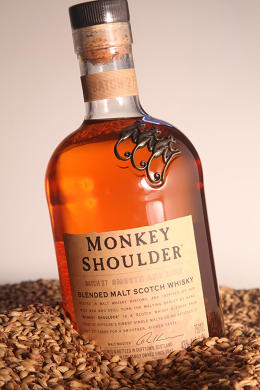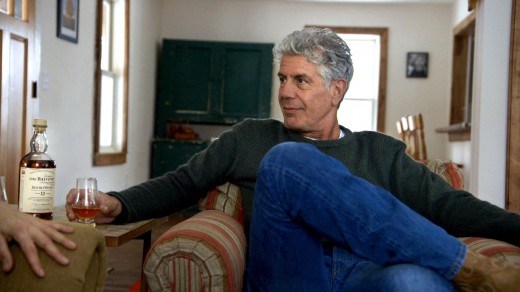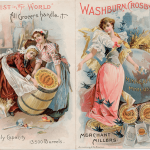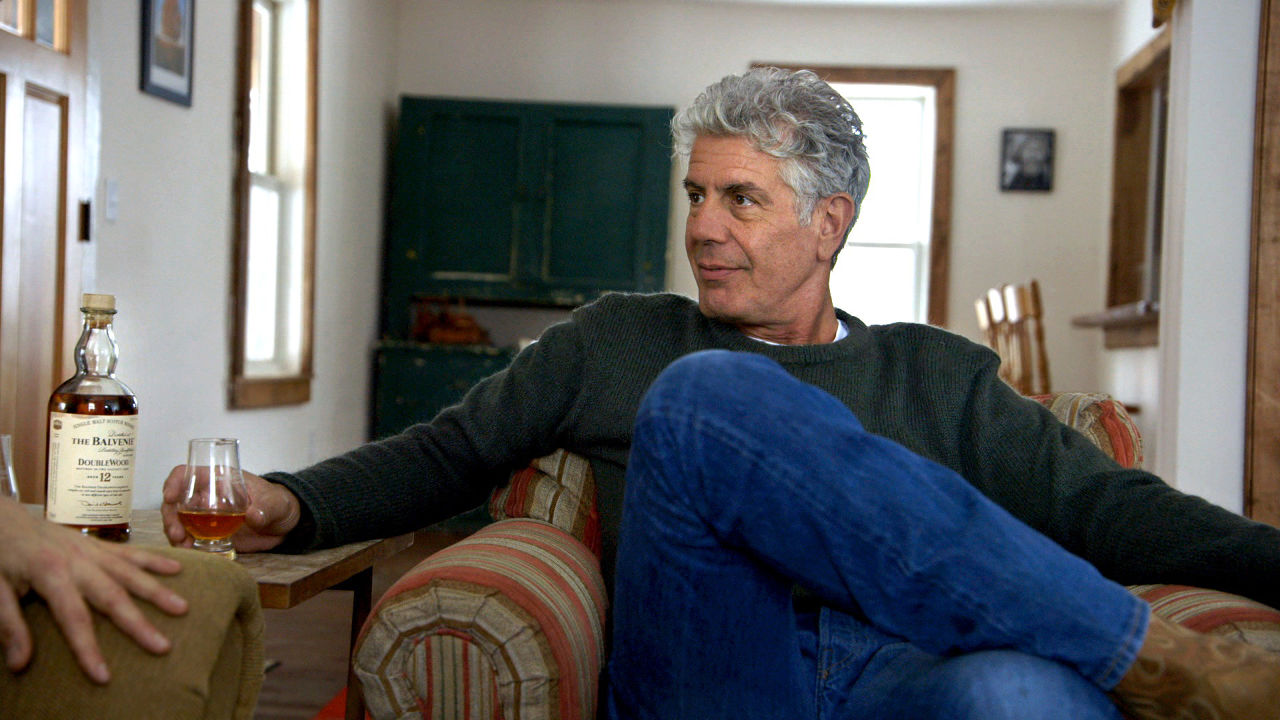How One company certain Anthony Bourdain To Shill as it Rebrands Scotch
William provide & Sons want to work its method into the hearts and liquor cupboards of youthful consumers. Cheeky bar spoons incorporated.
March 3nodemodel.

As a renegade from the culinary institution and a critic of the meals industry, brand partnerships go towards his entire ethos. So it came as one thing of a shock when Bourdain announced final month that he was going to become the general public face of The Balvenie, a Scotch brand produced by the household-owned William supply & Sons firm. “As you may expect, he was once very skeptical of the proposition when we first introduced it up,” says Andy Weir, senior model manager on the Balvenie. “We knew that he hadn’t executed an endorsement ahead of, so we had been prepared for a tricky dialog.”
To get him on board, Weir and his workforce at the Balvenie urged that instead of simply shilling Scotch, Bourdain could focal point on American craftsmanship: he could create a video series within the type of his parts Unknown and No Reservations the place he would go back and forth around the usa to fulfill artisans at work. The pitch labored. the primary episode of this new sequence, uncooked Craft, has already been launched: in it, Bourdain hangs out with a pair of metalworkers who make forged-iron skillets through hand in Syracuse, ny. it’s a painstaking course of that ends up in simplest eight or 9 skillets a day. “Craftsmanship is ready doing issues the old-college approach, the slow way, the good distance, the stupid method—the way that will not be probably the most successful, business, or environment friendly,” Bourdain tells me over email. (We couldn’t chat over the telephone, sadly, as a result of he used to be en route to Beirut once I was reporting this story.)
The Balvenie isn’t explicitly mentioned in the episode, but when Bourdain decides to make a steak au poivre in the crucible furnace (a basic Bourdain move), he uses The Balvenie to make the reduction sauce. The video additionally ends with all parties concerned downing glasses of The Balvenie, as one does, apparently, after an extended day of iron working. It’s now not a specifically subtle endorsement, but however, Bourdain is just not shy about his love of Scotch. “It’s a significant drink for severe moods, in my case,” Bourdain says. “I are likely to drink Scotch when I’m feeling sentimental, reflective, retrospective.”
Bourdain represents a brand new era of Scotch drinker. for centuries, Scotch was once the beverage of choice for a particular roughly gray-haired gentleman who favored to take a seat by way of the fireplace in a smoking jacket together with his trusty canine. Then, riding a nascent artisanal wave, Scotch suddenly was younger and edgy. in the mid-2000s, outdated Scotch whiskey brands with troublesome-to-pronounce names—Laphroaig, Caol Ila, Lagavulin, Glenfiddich—began showing up within the liquor cabinets of hip, city twenty- and thirtysomethings. In Brooklyn, a whiskey and grilled cheese joint known as Noorman’s Kil opened in 2011; hipsters in skinny jeans pedaled over on their fastened-equipment bikes to order $120 glasses of Scotch that had been older than they have been.
The Scotch trade used to be puzzled. “It wasn’t a acutely aware choice for Scotch makers to attract a youthful target market—it had to do with a transformation in shopper style,” explains Michael Giardina, senior model supervisor at Glenfiddich, any other William furnish label. Ten years in the past, Scotch’s youngest consumers were round forty five; these days, Giardina says they’re as younger as 25. And although these younger drinkers found out Scotch on their very own, the Scotch makers are investing heavily in studying about this new demographic and catering to their tastes. The Balvenie partnership is an effective instance of this strategy at work, considering the fact that Anthony Bourdain is a family title with the millennial set. however Scotch brands are doing a lot more: they’re ensuring their products are available at the right types of bars and eating places. brand ambassadors are inviting twentysomethings to events the place they can play ping pong while learning the adaptation between single-malt and blended-malt whiskies.
These efforts look like paying off. imagine the story of Michael Fearon, a devoted Scotch fan. In 2008, when Fearon used to be 25, he attended a Laphroaig tasting at a restaurant close to Boston. His first intuition was once to be skeptical: how on earth do you even say the name? (He points me to this video of people trying to pronounce Laphroaig, which mainly comes out sounding like “Lap Frog.”) but Laphroaig’s means is to encourage new drinkers to be absolutely sincere about how it tastes to them—inviting solutions like “pee,” “smoked fish,” and “seagull’s armpits”—which makes the whole process less intimidating. And the strategy labored. Scotch is now a part of Fearon’s lifestyles: he buys a brand new bottle every couple of months, he’s bonded with different Scotch drinkers, and he even went on a tour of Scottish distilleries in November. His friends throw Burns night events, in honor of the Scottish poet Robert Burns, the place they drink Scotch, devour haggis, and recite poetry. “It’s kind of like a ebook membership, but for Scotch,” he says.
The Balvenie’s focal point on craftsmanship may be very strategic. when I spoke to Scotch experts, they agree that some of the main issues that pulls younger individuals to Scotch is its handcrafted nature. Scotch turned into widespread at roughly the precise second that hipsters in Brooklyn and Portland developed a fascination with artisanal food products—pickles, red meat jerky, beer, mustard. within the face of massive industrial food corporations, these young tastemakers have been looking for merchandise that felt authentic and had a fascinating story at the back of them. when you consider that Scotch makers have all the time prided themselves on their small, household-owned distilleries, Scotch was swept up in this development. The Balvenie, for example, has been made in the same position due to the fact that William provide constructed the distillery in 1892; his household still owns the corporate as of late. “it is a domestic that has lived out depressions, recessions, and two world wars,” says Weir. “The struggle cry of the furnish family is ‘Stand quick,’ and it is pretty apt, for the reason that family has stood its ground all these years.”
because the artisanal meals movement has grown, many corporations have hopped aboard the bandwagon, claiming their merchandise are equally lovingly handcrafted. quickly after Scotch changed into newly in style, American and jap whiskies also grew in popularity, and plenty of have also used the language of expertise to sell their products. (previous-faculty brown spirits were slowly growing in market share over the last decade, and currently make up 34.7% of the U.S. alcohol market.) whereas some of these different whiskies are, in reality, made in household-owned distilleries, many are owned through big companies. Eric Felton points out in The day by day Beast that there’s a manufacturing facility complex in Lawrenceberg, Indiana, owned by way of the food manufacturing large MGP that cranks out monumental quantities of bourbons, wheat whiskey, and rye, which is then repackaged by way of entrepreneurs to be bought as artisanal whiskies. There are actually virtually 50 whiskey labels that bottle merchandise from this one factory, together with reputedly small-batch manufacturers like Bulleit Rye and Hooker’s house.
originally of The Balvenie’s collection, Bourdain makes a compelling case that craftsmanship has become completely diluted. “The term handcrafted will get thrown round so much nowadays,” he says. “It has develop into a motion—a pattern—that can obscure the passionate folks who in fact make amazing things by using hand.” With the raw Craft collection, The Balvenie is emphasizing its artisanal street cred with out immediately calling out its opponents which might be passing off industrially produced whiskey as handcrafted stuff. “In our branding, relatively than simply announcing we’re handmade, we’re pronouncing that we truly appreciate craftsmanship,” says Weir. “We’re the usage of our voice and platform to talk about people who share our values—people who imagine, as we do, in making issues by hand, although it is quicker to do it in alternative ways.”

Will this focus on actual craftsmanship lend a hand The Balvenie steady its situation in the hearts and liquor cupboards of millennials? perhaps, however William supply & Sons just isn’t taking any probabilities. It’s also accomplishing out to youthful customers by using extra standard method. Eight years in the past, it launched a wholly new brand, Monkey Shoulder, that particularly pursuits the youngest that you can imagine Scotch drinkers, of their early 20s. “We like to think of ourselves because the naughty nephew of the Scotch category,” says Tom Wade, Monkey Shoulder’s brand manager. “We wish to thumb our noses on the extra pretentious ideas that go along with the beverage.” At a price point of $32.ninety nine, it’s cheap sufficient for latest college grads and it does not appear a waste to throw it in fruity cocktails. Wade tells me that the name is intentionally meant to sound cheeky and enjoyable. however at the same time, it hearkens back to a specific part of the traditional whiskey-making course of, the place malt males would work lengthy shifts turning the barley through hand, inflicting their shoulders to hang down like a monkey’s. (“Don’t concern,” Wade says. “we’ve got a computer that ensures that we don’t must injure our workforce within the manufacturing of this beverage.”)
while The Balvenie’s purpose is to focus on drinkers who care in regards to the complexity of the beverage and the ability it takes to make it, Monkey Shoulder wants to make Scotch so simple as conceivable. “There’s various ideas and rigmarole that go along with Scotch,” Wade says. “For a brand new drinker, that’s not necessarily essentially the most welcoming community to get into: they don’t need to worry about doing one thing flawed or making a idiot out of themselves. Monkey Shoulder’s manner is to let individuals drink it any way they need.” The hope is that once the twentysomethings get a taste of Scotch, they’re going to stick with it and wish to discover different, dearer, brands inside the firm.
in the cheeky spirit of the brand, it has marketed the product in strange and engaging ways. Monkey Shoulder invented a special extendable bar spoon that bartenders might maintain neatly compressed of their aprons, however then pull out into its full length once they wanted to stir a cocktail in a shaker or tall glass. It was once a wacky form of gimmick to get on the nice facet of bartenders, however it labored like a allure: bartenders all over the world who got one free of charge have turn out to be loyal advocates of the emblem. Monkey Shoulder additionally launched a sequence of hilarious movies that played on the concept of spooning. There are few things that millennials like more than a viral video, and, if manufacturers like the Balvenie and Monkey Shoulder have their means, Scotch might be on the brief listing of faves.
(145)














